Shiv Purana
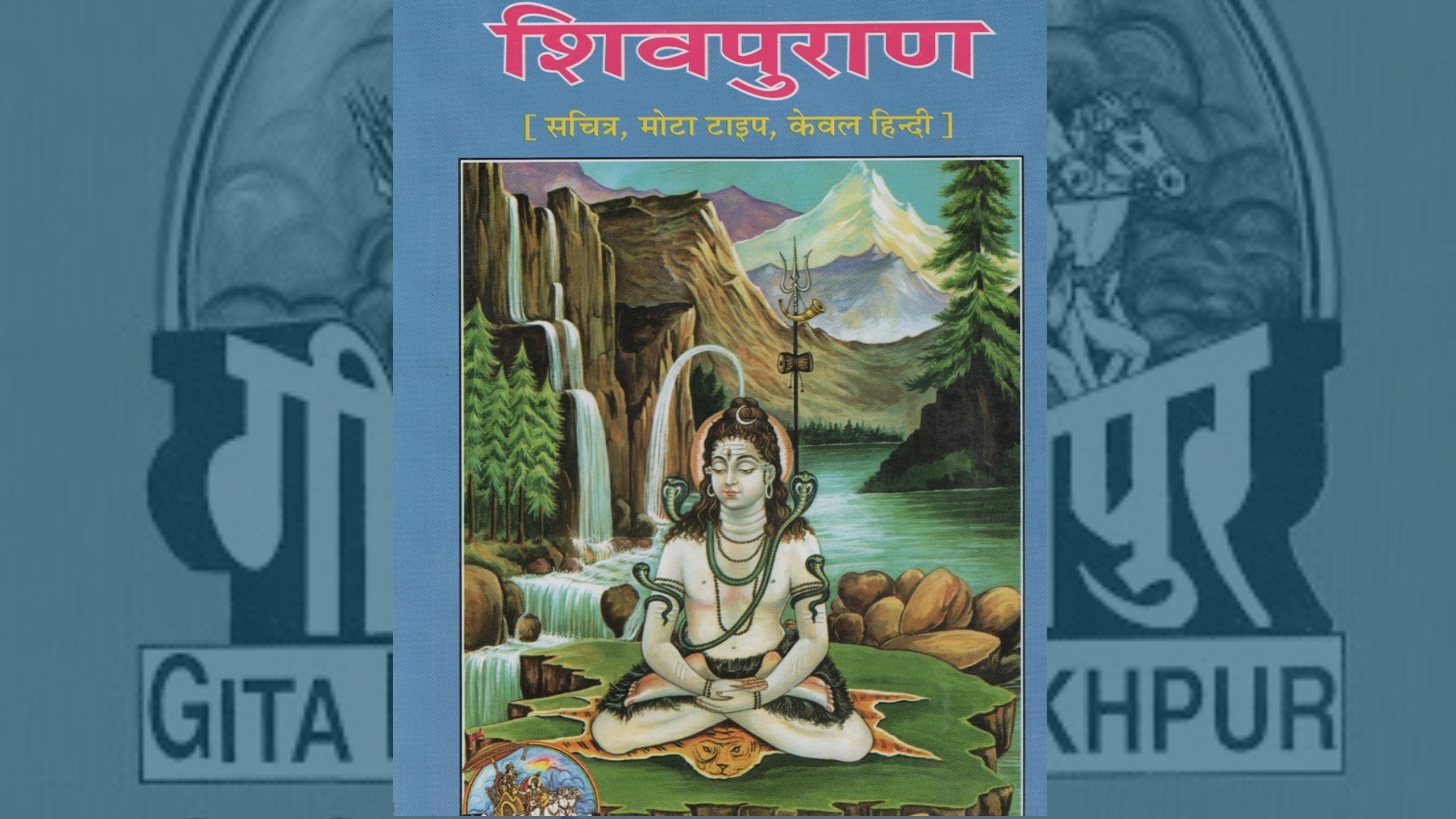
Shiv Puran - Gita Press Gorakhpur - Unknown Facts | Analysis
Shiv Puran like every other Puran has been written by Sage Ved Vyas. Shiv Purana sings the glory of Lord Shiva (Sadashiv) and describes various tales of Sadashiv. It also gives evidence that Brahma, Vishnu and Mahesh (Rudra) are children of Sadashiv. This Sadashiv (Mahashiv) has been addressed as Kaal in Shiv Purana. This is the reality that Sadashiv is Kaal, also known as Brahm. His wife is Goddess Durga. Rudrasahita in Shiv Puran gives evidence about Sadashiv being Kaal, and Brahma, Vishnu and Shiv being his children.
Unknown Facts from Shiv Puran, Rudra Samhita
- Goddess Durga is also known as Prakriti.
- Birth of Vishnu & Brahma. Goddess Durga is the mother of Brahma, Vishnu and Shiva.
- God Mahashiv or Kaal or Brahm is the father of Brahma and Vishnu and Shiv.
The Shiv Puran account below is in both Hindi and English. The English text is below the Hindi text.
Shiv Purana Rudra Samhita Adhyay 6
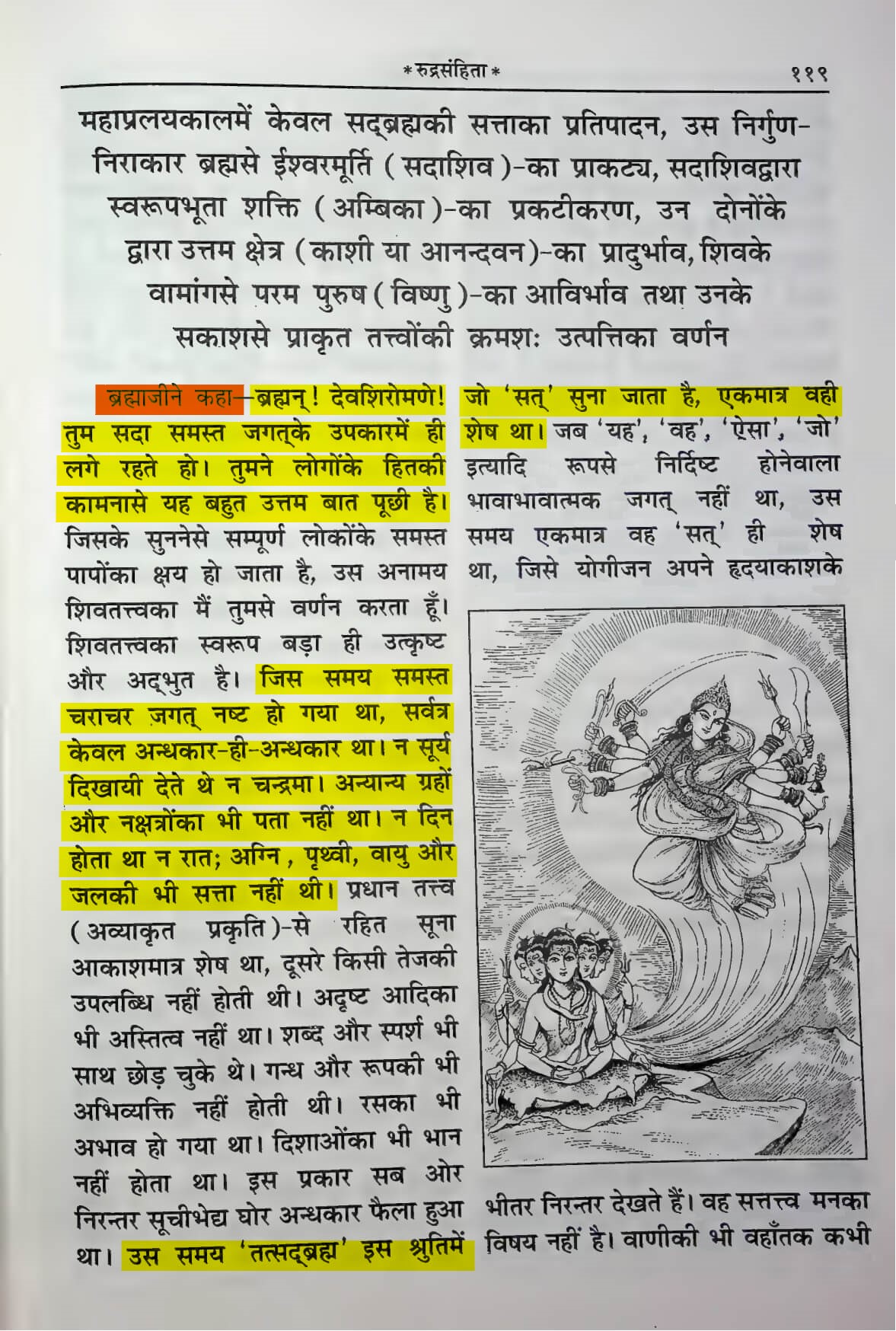
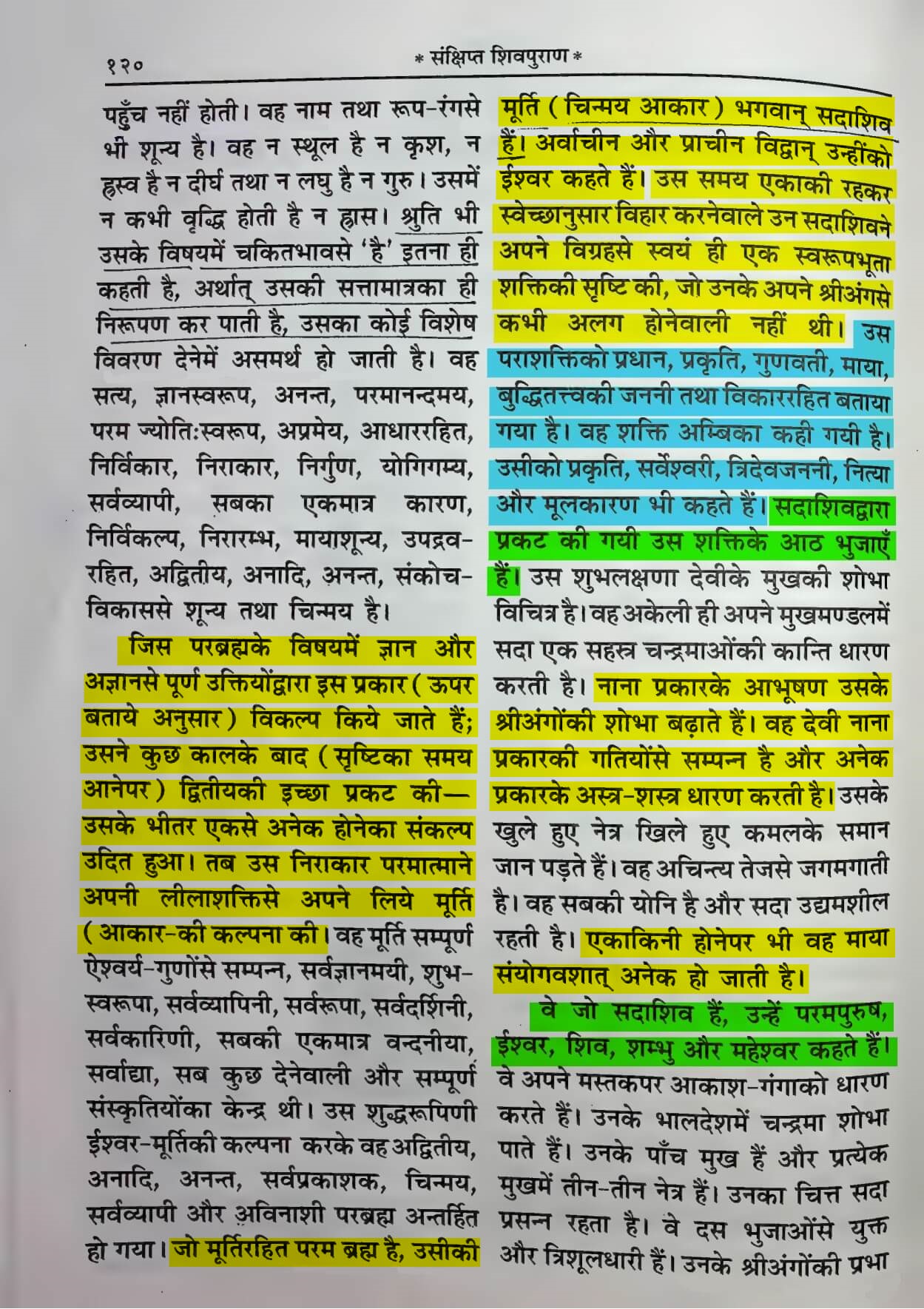
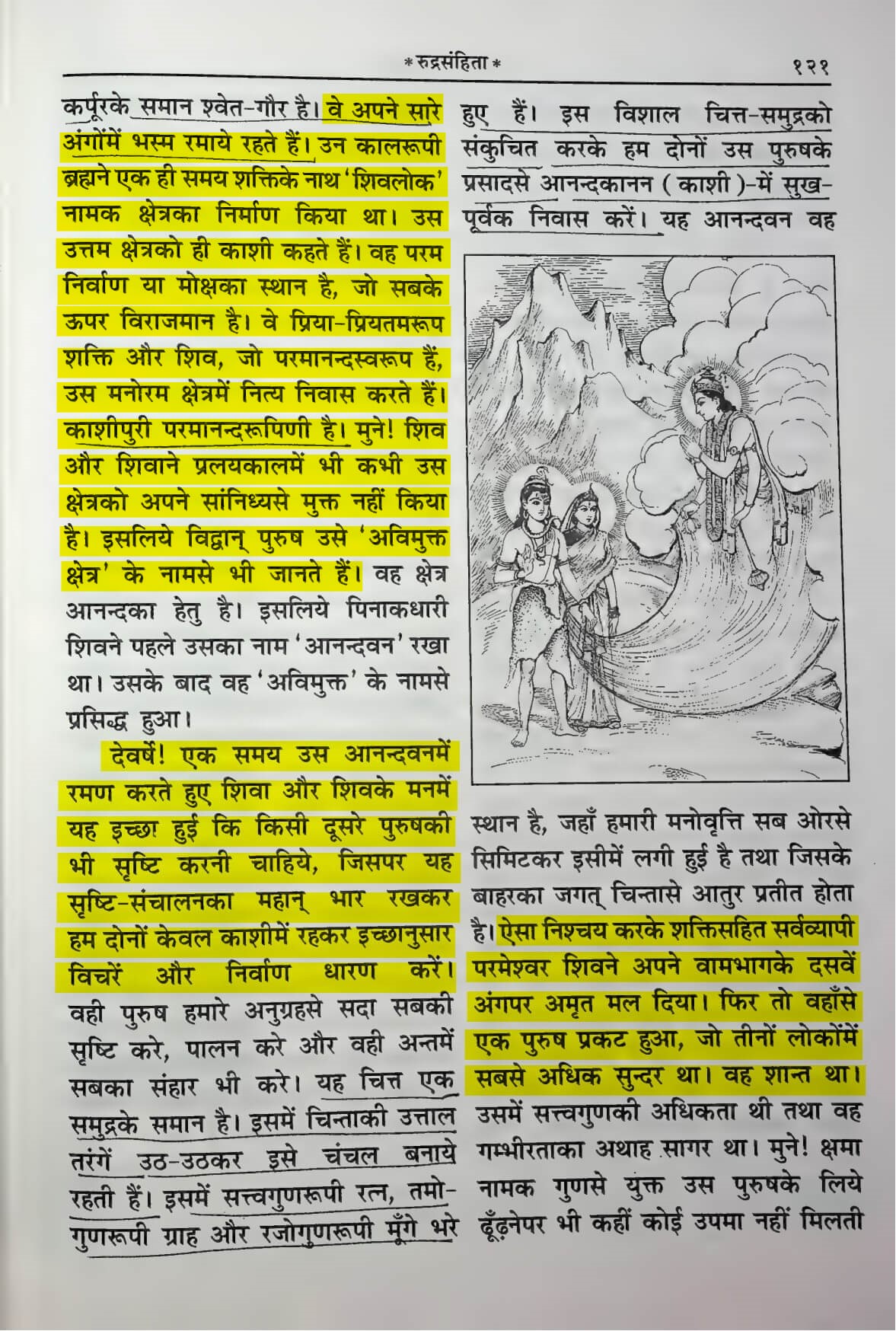
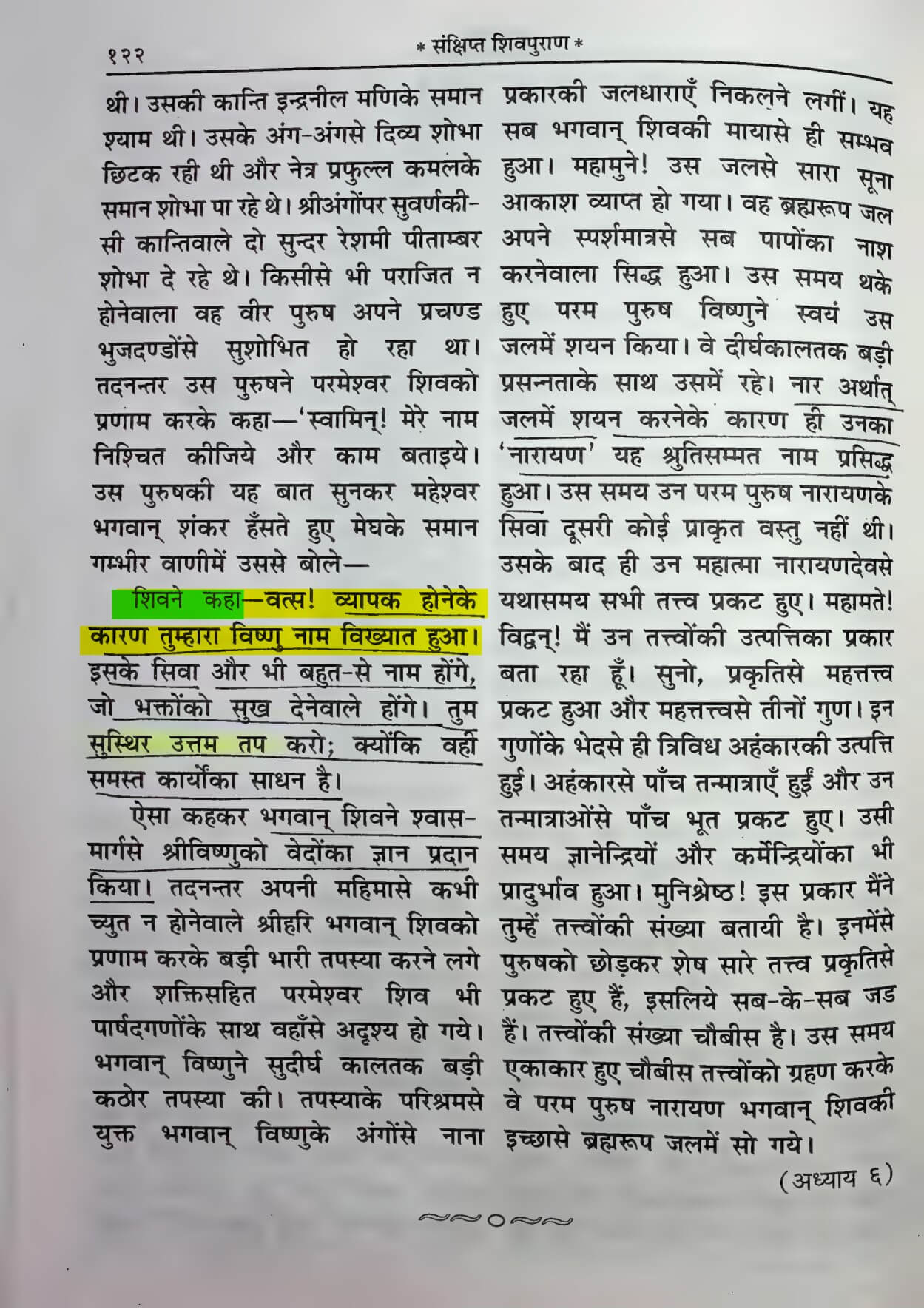
Shiv Purana - Rudr Samhita Adhyay 6 | English
CHAPTER SIX
(Description of the nature of Mahapralaya and the origin of Vishnu)
Brahma said:-
1. O Brahmin, foremost among the celestial beings, a good matter has been enquired into by you rendering service to the worlds and desiring their benefit.
2. I shall explain to you the wholesome and salutary principles of Shiva on hearing which the various sins of the people are destroyed.
3. Neither the principles of Shiva nor His supreme wonderful forms have been understood by me or by Vishnu or by any one else.
4. At the time of Great Dissolution when all the mobile and immobile objects of the world are dissolved everything gets enveloped in darkness, without the sun, planets and stars.
5. There is no moon. The day and the night are not demarcated. There is no fire, no wind, no earth and no water. There is no unmanifest primordial being. The whole firmament is one complete void, devoid of all Tejas elements.
6. There is no Dharma or Adharma, no sound, no touch. Smell and colour are not manifest. There is no taste. The face of the quarters is not demarcated.
7. Thus when there is pitch darkness that cannot be pierced with a needle and what is mentioned in the Vedas as "The Existent and the Brahman" is alone present.
8. When the present visible world is not in existence, the Sat Brahman alone is present which Yogins observe perpetually in the inner Soul, the inner Firmament.
9. It is incomprehensible to the mind. It cannot at all be expressed by words. It has neither name nor colour. It is neither thick nor thin.
10. It is neither short nor long. It is neither light nor heavy. There is neither increase nor decrease in it.
11. The Veda says that it envelops whatever is in a surpnsmg way. It is the splendour, the truth, the knowledge, the eternal and the great Bliss.
12. It is immeasurable, propless, changeless, formless, attributeless, perceptible to the Yogins, all-pervasive and the sole cause of the universe.
13. It is free from alternatives. It has no beginning. It is free from illusion and its harassment. It has no second. It has neither beginning nor end. It has no development. It is in the form of pure knowledge.
14. People have doubts about giving it a name. That Being, then after sometime, it is said, wished for a second.
15. The Being, having no form of its own, wished to create, in the course of its own sport, an auspicious form of its own endowed with all power, qualities and knowledge.
16-18. A form that goes everywhere, that has all forms, that sees all, that is the cause of all, that should be respected by all, that is at the beginning of all, that bestows everything, and that sanctifies everything should be created ( So it wished) and hence created that form of Isvara of pure nature. The original Being without a second, with neither beginning nor end, that illuminates everything, that is in the form of Cit (pure knowledge) , that which is termed Supreme Brahman, the all-pervasive and undecaying, vanished, The manifest form of the formless Being is Sadashiva. Scholars of the ancient and succeeding ages have sung of it as lsvara.
19. Is vara though alone, then created the physical form Shakti from his body. This Shakti did not affect his body in any way.
20. This Shakti is called by various names. Pradhana, Prakrti, Maya, Gunavati, Para. The mother of Buddhi Tattva (The cosmic Intelligence) , Vikrtivarjita (without modification ).
21. That Shakti is Ambika, Prakrti and the goddess of all. She is the prime cause and the mother of the three deities.
22. She has eight arms. Her face wears a peculiar splendour, the splendour of a thousand moons. Thousands of stars perpetually sparkle round her face.
23. She is bedecked in various ornaments. She has various weapons. She is capable of various movements. Her eyes beam like a full blown lotus.
24. She has a brilliance which could hardly be conceived. She is the generating cause of all. She sprang up singly as Maya. In her union she manifested in various forms.
25. The supreme Purusa is Shiva. He is called Sambhu. He has no other lord over Him. He holds the Mandakini (Ganga ) on His head, and the crescent moon on His forehead. He has three eyes.
26. He has five faces. He is always joyful. He has ten arms. He holds the trident. He is as pure and white as camphor. His body is entirely dusted with the ash.
27. That Brahm form of Kaal (Time) together with Shakti, simultaneouly created the holy centre called Shivaloka.
28. The same is called Kasika, the excellent holy centre. It is the seat of salvation shining over and above everything.
29. The holy centre is of the nature of extreme Bliss in asmuch as the primordial lovers, supremely Blissful, made that beautiful holy centre their perpetual abode.
30. O sage, that holy centre is never, even at the time of Great Dissolution, free from Shiv and Shivaa (Shakti). Hence it is called Avimukta.
31. Since the holy centre is the cause of Bliss, the Pinaka-bearing lord (Shiva) called it "the blissful forest" and later "Avimukta".
32. O celestial sage, the blissful, two deities thus sporting in the forest wished, it is said, for another Being to be created.
33-38. Shiva thought within Himself like this-"Another being shall be created by me. Let him create everything, protect it and in the end let him dissolve it with my blessing. Having entrusted everything to him we two, remaming in Kasi shall roam as we please keeping only the prerogative of conferring salvation. We can stay happily in this blissful forest being free from worries (of creation). With the consent of Shiva the supreme lord spread the liquorine essence of nectar on His left side, on the tenth limb, nectar which was the outcome of churning the ocean of His mind wherein Thoughts were the waves, the Sattva Guna).a was the precious gem, Rajas being coral and Tamas---crocodile. Thereupon a person came into being who was the most charming one in the three worlds, who was calm with Sattva Guna being prominent, and who appeared to be the ocean of immeasurable majesty.
39. O sage, he was endowed with patience. There was no one comparable to him. He had the lustre of sapphire. He was glorious with his excellent eyes shining like a lotus.
40. He was having a golden form and features. He wore two excellent silk garments of golden colour. His arms were brawny and brilliant. He was indefatigable.
41. He bowed to Shiva Paramesvara and said-"0 lord give me names and assign me my task."
42. On hearing it Lord Shiva laughed. With words thunderlike in resonance, Lord Shiva addressed the person thus. Shiva said :-
43. "You will be famous as Vishnu by name as you are all-pervasive. You will have many other names conferring happiness on devotees.
44. Perform penance highly conducive to the achivernent of the matter in hand, Be firm in it." Saying so, the lord bestowed on him the Vedas through his nostrils.
45. Shiva vanished accompanied by Shakti and his attendants. After due obeisance to Shiva, Vishnu began his great penance.
46. Even after performing the penance for twelve thousand divine years, Vishnu).U could not achieve his desire, the vision of Shiva that confers everything.
47. He became suspicious and respectfully meditating on Shiva pondered "What shall I do now ?"
48. In the meantime the auspicious voice of Shiva was heard. "Perform penance again for removing your doubts.
49. On hearing it Vishnu performed a terrible penance, for a long time, following the path of meditation.
50. That Being Vishnu became enlightened, following the path of meditation. He was delightfully surprised. "O what is that True entity ?"
51. From the body of Vishnu who thus exerted himself, water-currents of various sorts began to flow as a result of Shiva's Maya.
52. O great sage, the Supreme Brahm in the form of divine waters pervaded the entire void. A mere contact with the same is destructive of sins.
53. Vishnu, the weary person went to sleep amidst the waters. He was in that blissful state of delusion for a long time.
54. As approved in the Vedas, his name carne to be established as Narayal).a ( Having water as abode) . Excepting for that Primordial Being there was nothing then.
55. In the meantime, the Principles too were evolved out of the Great soul. 0 wise one of great intellect, listen to my enumeration of the same.
56. From Prakrti came into being the Mahat (cosmic Intellect) , from Mahat the three Gunas. Aharpkara ( the cosmic ego ) arose therefrom in three forms according to the three Gunas.
57. The Essences, the five elements, the senses of knowledge and action too came into being then.
58-59. O most excellent of sages, I have thus enumerated the principles. All these principles originating from Prakrti are insentient. but not the Purusha. These principles are twentyfour in number. Vishnu, the Purusha, accepted all these, as was the will of Shiva, and began his sleep in the Brahman.
Shiv Puran | Rudra Samhita | Video
Shiv Purana Rudra Samhita Adhyay 7
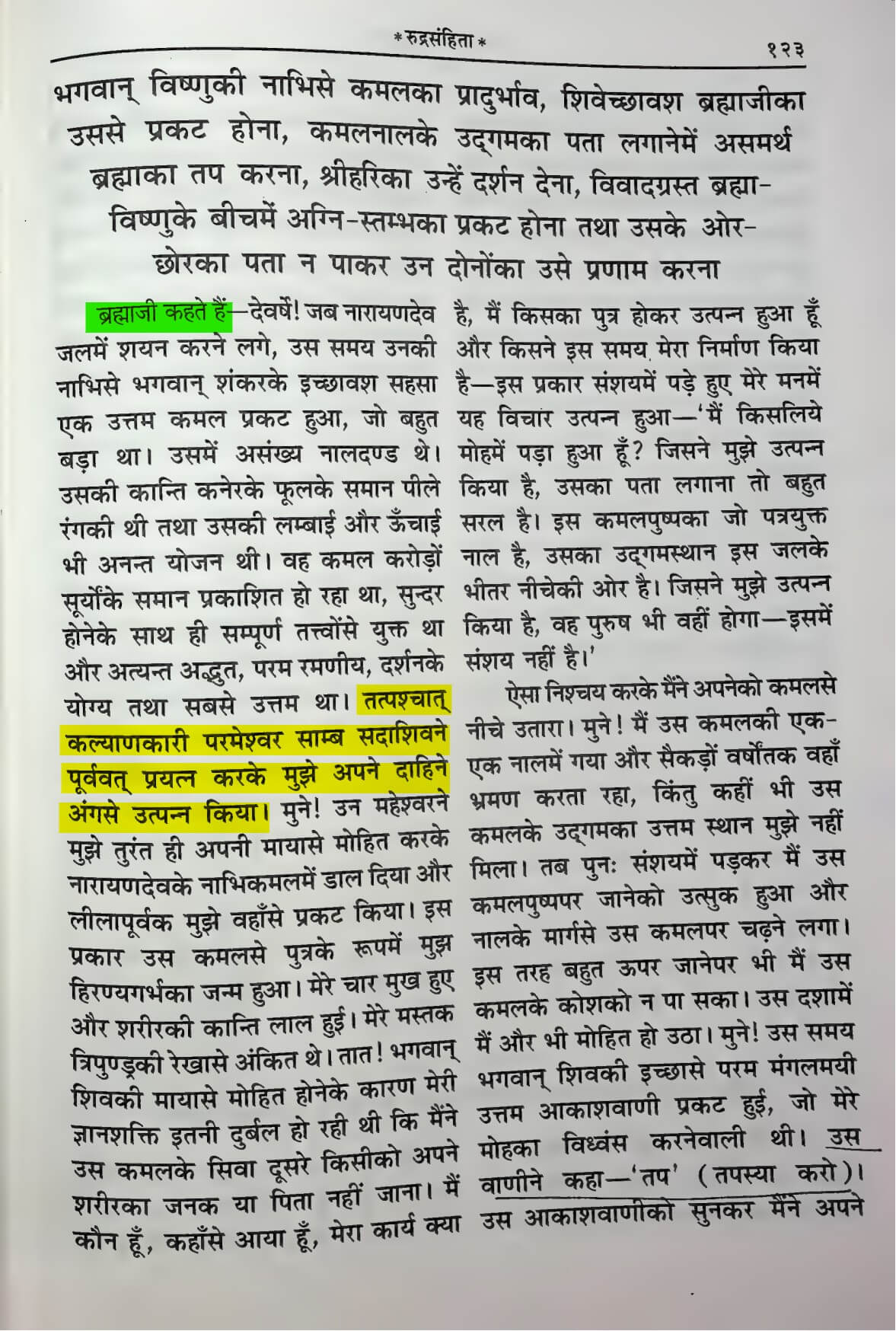
Shiv Purana Rudra Samhita Chapter 7 - English
4. Exerting himself as before, Shiva, the great lord, with Parvati as his better half created me from His right limb.
- In the line above Brahma is saying that Lord Sadashiv created Brahma as well.
Shiv Puran Rudra Samhita, Pratham Khand, Adhyay 1
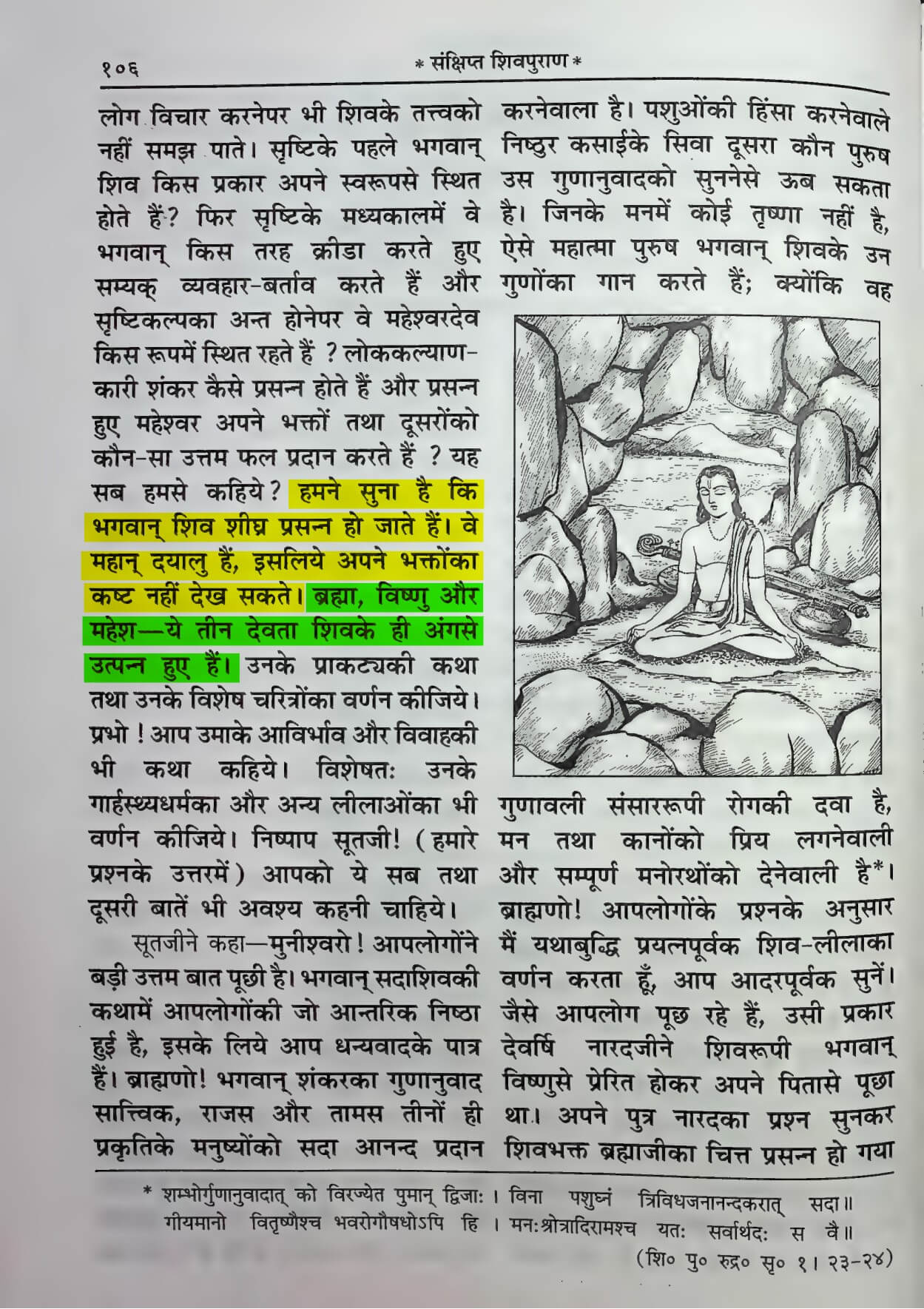
Shiv Puran Rudra Samhita, Khand 1, Chapter 1 - English
We have heard that Lord Shiva is easily pleased. He is very benevolent, therefore cannot witness the agony of his devotees. The trio Brahma, Vishnu and Mahesh have originated from Shiva.
Conclusion
The above proves the following
- Sadashiv who is addressed as Shiv in Shiv Puran is Kaal (Brahm)
- Brahma, Vishnu and Shiv (Mahesh) are children of Kaal (addressed as Sadashiv in Shiv Purana)
- Goddess Durga (Ashtangi, Prakriti Devi) is the wife of Kaal and Mother of Brahma, Vishnu and Shiv
References
- Shiv Purana - English
- Shiv Purana - Hindi - Gita Press Gorakhpur
- Sankshipt Shiv Purana - Gita Press Gorakhpur
Shrimad Devi Bhagwat Puran Birth of Brahma Vishnu & Shiv | Shiv Puran
Categories: purana | Tags:
